Garmin GXM 53 Handleiding
Garmin
Niet gecategoriseerd
GXM 53
Bekijk gratis de handleiding van Garmin GXM 53 (4 pagina’s), behorend tot de categorie Niet gecategoriseerd. Deze gids werd als nuttig beoordeeld door 240 mensen en kreeg gemiddeld 4.4 sterren uit 120.5 reviews. Heb je een vraag over Garmin GXM 53 of wil je andere gebruikers van dit product iets vragen? Stel een vraag
Pagina 1/4

GXM™ 53
Installation Instructions
Important Safety Information
WARNING
The weather information provided through this product is subject
to service interruptions and may contain errors, inaccuracies, or
outdated information, and consequently should not be relied
upon exclusively. Always use common sense while navigating,
and check alternate weather information sources prior to making
safety-related decisions. You acknowledge and agree that you
shall be solely responsible for use of the weather information
and all decisions taken with respect to navigating in weather.
Garmin® will not be responsible for any consequences of using
SiriusXM® weather information.
When connecting the power cable, do not remove the in-line
fuse holder. To prevent the possibility of injury or product
damage caused by fire or overheating, the appropriate fuse
must be in place as indicated in the product specifications. In
addition, connecting the power cable without the appropriate
fuse in place voids the product warranty.
CAUTION
Always wear safety goggles, ear protection, and a dust mask
when drilling, cutting, or sanding.
NOTICE
When drilling or cutting, always check what is on the opposite
side of the surface.
Registering Your Device
Help us better support you by completing our online registration
today.
• Go to .my.garmin.com
• Keep the original sales receipt, or a photocopy, in a safe
place.
Contacting Garmin Product Support
• Go to for in-country support information.support.garmin.com
• In the USA, call 913-397-8200 or 1-800-800-1020.
• In the UK, call 0808 238 0000.
• In Europe, call +44 (0) 870 850 1241.
Software Update
You should update the software on all of your Garmin devices
when you install this device.
The software update requires either a Garmin memory card
reader accessory or a Garmin chartplotter connected over the
Garmin Marine Network (sold separately).
Garmin devices support up to a 32 GB memory card, formatted
to FAT32.
Updating the Device Software
Before you can update the software, you must obtain a
software-update memory card or load the latest software onto a
memory card.
1Turn on the chartplotter.
2After the home screen appears, insert the memory card into
the card slot.
NOTE: In order for the software update instructions to
appear, the device must be fully booted before the card is
inserted.
3Follow the on-screen instructions.
4Wait several minutes while the software update process
completes.
5When prompted, leave the memory card in place and restart
the chartplotter manually.
6Remove the memory card.
NOTE: If the memory card is removed before the device
restarts fully, the software update is not complete.
Loading the New Software on a Memory Card
1Insert a memory card into the card slot on the computer.
2Go to .www.garmin.com/support/software/marine.html
3Select next to .Download GPSMAP Series with SD Card
4Read and agree to the terms.
5Select .Download
6Select .Run
7Select the drive associated with the memory card, and select
Next Finish > .
Antenna Mounting Considerations
You can mount the antenna on a flat surface or attach it to a
standard 1 in. OD, 14 threads per inch, pipe-threaded pole (not
included). You can route the cable outside of the pole or through
the pole. For best performance, consider these guidelines when
selecting the antenna mounting location.
• To ensure the best reception, the antenna should be
mounted in a location that has a clear, unobstructed view of
the sky in all directions À.
• The antenna should not be mounted where it is shaded by
the superstructure of the boat Á, a radome antenna, or the
mast.
• The antenna should not be mounted near the engine or other
sources of Electromagnetic Interference (EMI) Â.
• If a radar is present, the antenna should be mounted above
the path of the radar Ã. If necessary, the antenna may be
mounted below the path of the radar Ä.
• The antenna should not be mounted directly in the path of the
radar Å.
• The antenna should be mounted at least 1 m (3 ft.) away
from (preferably above) the path of a radar beam or a VHF
radio antenna Æ.
December 2016 Printed in Taiwan 190-02153-02_0A

Testing the Mounting Location
1Temporarily secure the antenna in the preferred mounting
location and test it for correct operation.
2If you experience interference with other electronics, move
the antenna to a different location, and test it again.
3Repeat steps 1–2 until you observe full or acceptable signal
strength.
4Permanently mount the antenna.
Surface Mounting the Antenna
NOTICE
If you are mounting the bracket on fiberglass with screws, it is
recommended to use a countersink bit to drill a clearance
counterbore through only the top gel-coat layer. This will help to
avoid cracking in the gel-coat layer when the screws are
tightened.
Stainless-steel screws may bind when screwed into fiberglass
and overtightened. It is recommended to apply an anti-seize
lubricant on the screws before installing them.
Before you permanently mount the antenna, you must test the
mounting location for correct operation (Antenna Mounting
Considerations, page 1).
1Using the surface-mount bracket À as your mounting
template, mark the three pilot-hole locations and trace the
cable-hole in the center of the bracket.
2Set the surface-mount bracket aside.
Do not drill through the bracket.
3Drill the three 3.2 mm ( 1/8 in.) pilot holes.
4Drill the 19 mm ( 3/4 in.) cable hole in the center.
5Place the seal pad Á on the bottom of the surface-mount
bracket, aligning the screw holes.
6Use the included M4 screws to secure the surface-mount
bracket to the mounting surface.
7Route the cable  through the center hole and connect it to
the antenna.
8Verify the large gasket à is in place on the bottom of the
antenna, place the antenna on the surface-mount bracket,
and twist it clockwise to lock it in place.
9Secure the antenna to the mounting bracket with the included
M3 screw Ä.
10Route the cable away from sources of electronic interference.
Mounting the Antenna with the Cable Routed Through
the Pole
Before you permanently mount the antenna, you must test the
mounting location for correct operation ( (Antenna Mounting
Considerations, page 1)).
1Position a standard 1 in. OD, 14 threads per inch, pipe-
threaded pole (not included) in the selected location, and
mark the approximate center of the pole.
2Drill a hole using a 19 mm ( 3/4 in.) drill bit for the cable to
pass through.
3Fasten the pole to the boat.
4Thread the pole-mount adapter onto the pole.
Do not overtighten the adapter.
5Route the cable through the pole and connect it to the
antenna.
6Place the antenna on the pole-mount adapter and twist it
clockwise to lock it in place.
7Secure the antenna to the adapter with the included M3 set
screw À.
8With the antenna installed on the pole mount, fill the vertical
cable slot Á with a marine sealant (optional).
9Route the cable away from sources of electronic interference.
Mounting the Antenna with the Cable Routed Outside
the Pole
Before you permanently mount the antenna, you must test the
mounting location for correct operation ( (Antenna Mounting
Considerations, page 1)).
1Route the cable through the pole-mount adapter À, and
place the cable in the vertical slot Á along the base of the
pole-mount adapter.
2

2Screw the pole-mount adapter onto a standard 1 in. OD, 14
threads per inch, pipe-threaded pole (not included).
Do not overtighten the adapter on the pole.
3Connect the cable to the antenna.
4Place the antenna on the pole-mount adapter and twist it
clockwise to lock it in place.
5Secure the antenna to the adapter with the included M3 set
screw Â.
6With the antenna installed on the pole mount, fill the
remaining gap in the vertical cable slot with a marine sealant
(optional).
7Attach the pole to the boat if it is not already attached.
8Route the cable away from sources of electronic interference.
Connection Considerations
NOTICE
If you are connecting the audio cable from the wiring harness,
you must connect it to the line-in or auxiliary port on a stereo.
Attempting to connect the audio cable directly to a speaker will
result in poor performance, and it may cause the antenna to
shut down, which might damage the antenna or the speaker.
You must connect this antenna to power and to the Garmin
Marine Network to provide weather information to connected,
compatible Garmin devices.
Item Description Notes
ÀAntenna
ÁIgnition or in-line
switch (not
included)
You should connect the power and audio
module to the battery through the ignition
switch or through an additional in-line switch
(not included). Connecting the harness
directly to the battery may drain the battery.
ÂAntenna cable This cable connects the antenna to the wiring
harness, and is 6 m (20 ft.) long.
Additional lengths are available from Garmin.
Ã9 to 32 Vdc
power source
Item Description Notes
ÄPower and audio
module
You should install the module in a location
with access to power, the installed antenna,
and a Garmin Marine Network device.
You can secure the module to existing cabling
or a structure using zip ties (not included), or
you can secure it to a bulkhead using the
included screws.
ÅGarmin Marine
network device
If additional network ports are not available on
the nearby Garmin Marine Network device,
you may need to use a GMS
™ 10 to share
weather data between multiple chartplotters.
ÆAudio out cable Connects to the line-in or auxiliary port on a
stereo to listen to SiriusXM stations.
You can extend this cable using a standard
RCA cable if necessary. Extension-cable
connections should be made in a protected
area that is not exposed to water.
Activating a SiriusXM Subscription
SiriusXM offers several subscription options. Go to
http://www.siriusxm.com/sxmmarine to determine which
subscription package is best for your needs.
Before you can activate your SiriusXM subscription, you must
have the radio ID of your antenna. The radio ID is available in
the product box, and on the System Information page of a
connected device. See the owner's manual provided with your
device for more information.
1Contact SiriusXM by phone at (866) 528-7474 or go to
http://care.siriusxm.com to subscribe.
2Provide the necessary information to the SiriusXM
representative or on the web site to activate your antenna.
3Verify the functionality of the activated services:
• For SiriusXM weather, on a connected device, view the
Weather Subscription option from the System Information
page, and confirm that your subscribed services are listed.
• For SiriusXM radio, on a connected device, go to the
Media page and confirm that radio channels are available.
4If the service is not activated within the hour, go to
http://care.siriusxm.com/refresh or contact SiriusXM by phone
at 1-855-MYREFRESH (697-3373).
NOTE: For the antenna to receive the SiriusXM signal, it
must be powered on, facing skyward, and tuned to channel 1.
Appendix
Specifications
Measurement Specification
Dimensions (diameter x height) 3.61 × 1.95 in. (91.6 × 49.5 mm)
Weight 7.1 oz (201 g)
Temperature range From -22° to 158°F (from -30° to
70°C)
Case material Fully gasketed, high-impact plastic
alloy
Water rating IEC 60529 IPX7*
Power input source From 9 to 32 Vdc
Input current 300 mA at 12 Vdc
Fuse 32 V, 2 A, mini-blade type, fast-acting
Antenna cable length 6 m (20 ft)
Power cable length 2 m (6.5 ft.)
Garmin Marine Network cable
length
2 m (6.5 ft.)
Audio cable length 2 m (6.5 ft.)
3
Product specificaties
| Merk: | Garmin |
| Categorie: | Niet gecategoriseerd |
| Model: | GXM 53 |
Heb je hulp nodig?
Als je hulp nodig hebt met Garmin GXM 53 stel dan hieronder een vraag en andere gebruikers zullen je antwoorden
Handleiding Niet gecategoriseerd Garmin
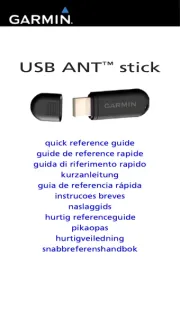
7 Mei 2025
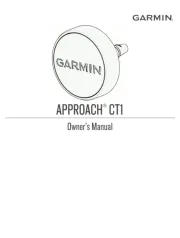
25 Februari 2025

9 Januari 2025

9 Januari 2025

14 December 2024

13 November 2024

2 Oktober 2024

23 Juli 2024

25 Juni 2024

9 Juli 2023
Handleiding Niet gecategoriseerd
- LiveU
- Quasar Science
- Stages
- Twisted Electrons
- Linhof
- Eltra
- Morrison
- Schneider
- BluGuitar
- Orbegozo
- TensCare
- BOHLT
- Tenderfoot Electronics
- Dynacore
- Selec
Nieuwste handleidingen voor Niet gecategoriseerd
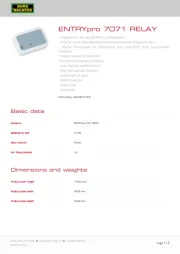
2 Augustus 2025
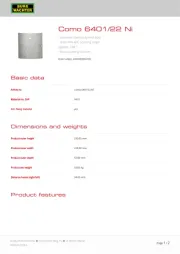
2 Augustus 2025
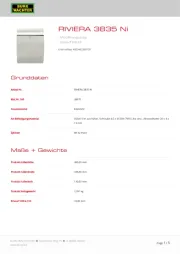
2 Augustus 2025
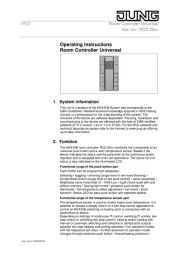
2 Augustus 2025
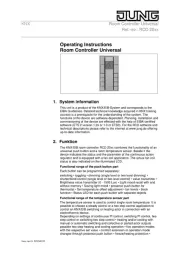
2 Augustus 2025
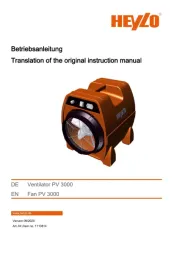
2 Augustus 2025
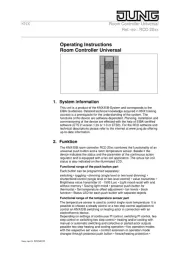
2 Augustus 2025
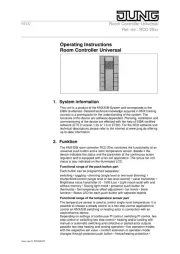
2 Augustus 2025
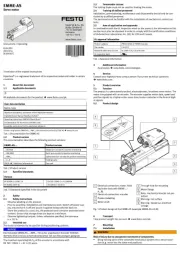
2 Augustus 2025
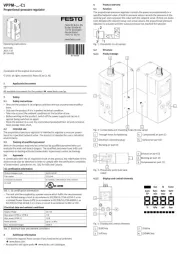
2 Augustus 2025